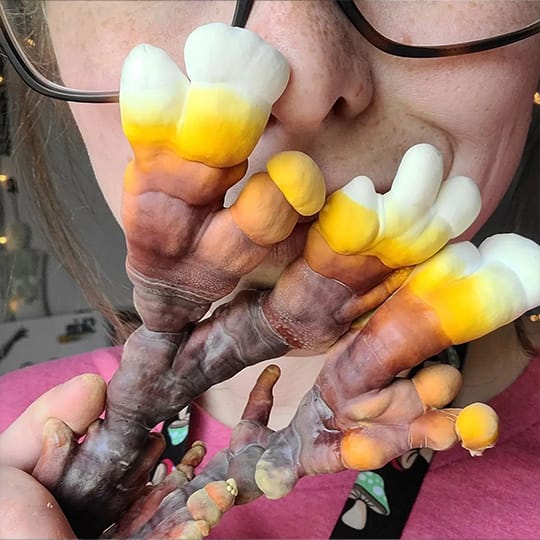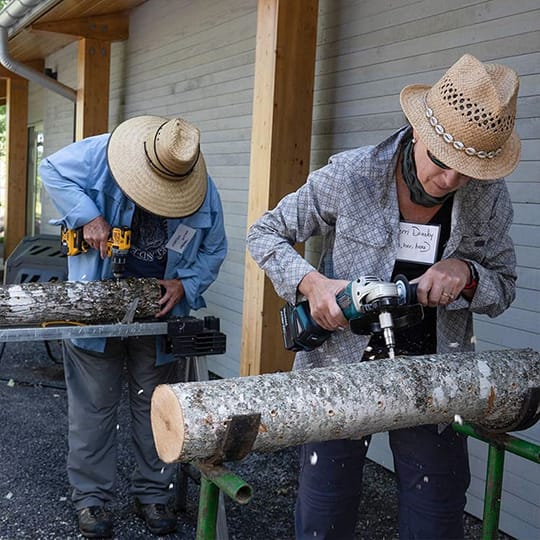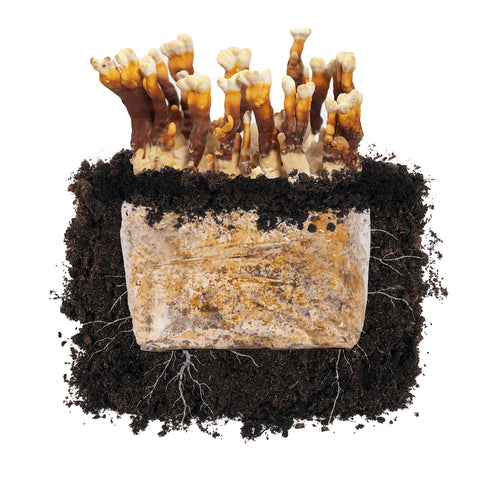

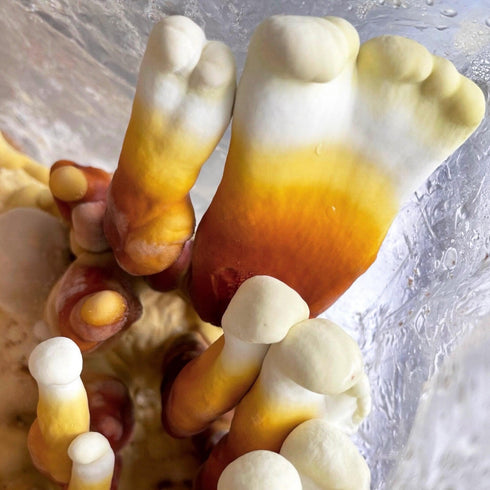
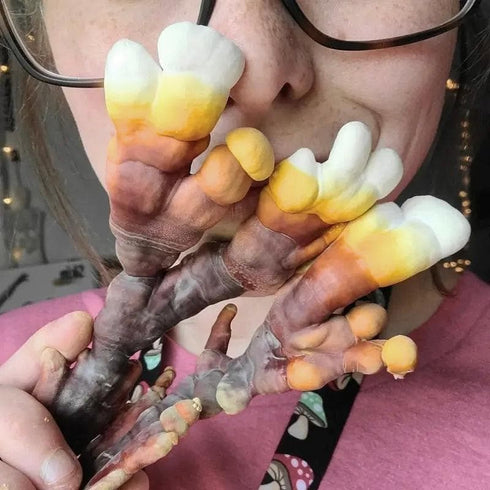

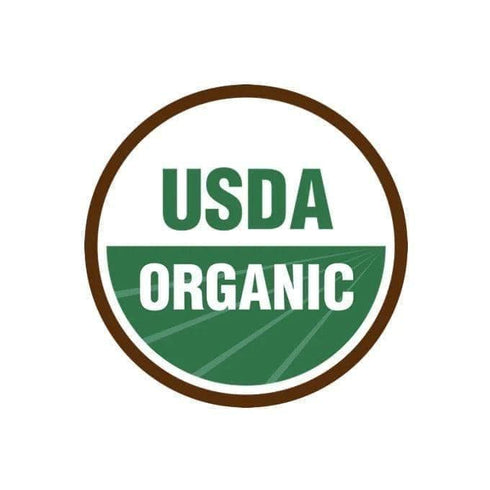









| Skill level | Beginner |
| Grow location | Outdoors |
| Grow speed | 1 to 3 months |
| Shelf life | 6 months (refrigerated) |
| Kit dimensions | 6in H x 9in W x 6in D |
| Kit weight | 5 lbs |
| Fruiting temps | 65-80°F |
Ganoderma lucidum | USDA Certified Organic
Reishi is an edible medicinal mushroom known as “Ling Zhi” in China and “Reishi” or “Manetake” in Japan. And our reishi fruiting block features a hearty strain that is widely cultivated in Asia and beloved by growers.
Reishi take their time and grow very slowly. Depending on your needs, you can harvest your mushrooms early when the mushrooms resemble antlers and are only a few inches tall. You may also allow them to grow long or experiment with different shapes.
-
Remove the block from the shipping box as soon as possible. Then, unfold the top of the bag, making room for air space. It's also important to check and confirm that the filter patch is not obstructed. This will help the organism breathe and continue to thrive until you are ready to grow your fruiting block!
-
Reishi is vigorous, fast-growing, and perfect for new outdoor cultivators. Taking slightly longer to fruit than other varieties, you'll notice they're ready when their "antlers" spring up out of the ground.
How to Initiate Fruiting Outdoors
- Choose a shaded location: Find a cool, humid spot like under trees, beside a fence, or in a sheltered garden bed.
- Bury the block: Remove your block entirely from the plastic and bury it in soil or mulch with about 1" of material above the block.
- Maintain consistent moisture: Mist the surrounding soil or mulch regularly (1–2x daily in dry weather) to prevent the block from drying out.
Temperature & Airflow
- Reishi thrive in moderate temperatures (ideally 65–80°F), making spring, late summer, and fall the best seasons for outdoor cultivation.
- Ensure good airflow to prevent excessive CO₂ buildup. Avoid enclosed or stagnant air pockets.
Special Considerations
- Reishi mushrooms are very slow growing.
- Because of the slow growth rate, there is greater risk of contamination when opened and buried. Consider leaving reishi in its bag until pinning has begun.
Harvesting Your Mushrooms
Mushrooms can be harvested by twisting the base and then trimming away any substrate. They can be dried in the open air.
-
Temperature 65-80°F | 18-26°C Humidity (Phase 1: Primordia) 95-100% Humidity (Phase 2: Fruitbody) 85-95% CO2 Sensitivity (Phase 1: Primordia) High CO2, keep in bag CO2 Sensitivity (Phase 2: Fruitbody) <2,000 ppm | keep bag closed for antlers, open bag for caps - Primordia - The earliest recognizable stage of fruitbody development. Also known as “baby mushrooms” or “mushroom pins.”
- Fruitbody - A fully grown mushroom, the reproductive structure of the organism in which the spores are produced.
- CO2 sensitivity - When CO2 levels are too high, yields will decrease, stems will become long and stringy, caps will be small, and/or growth will halt.
-
If you don't plan to use your reishi kit immediately, store in the refrigerator for up to 6 months. If left at room temperature, it will continue to grow.
-
Reishi mushrooms are intensely bitter and woody and usually aren't considered culinary unless harvested very young. However, we do recommend throwing a slice or two of dried reishi into soup stock, much like you'd use a bay leaf, to infuse the broth with its medicinal properties. You may also choose to incorporate reishi into medicinal teas tinctures.
-
If you’re going to consume home-grown mushrooms, make sure to cook your fresh mushrooms thoroughly with heat. If it is your first time eating this species, it is best to start with a small amount to check for allergies, even if cooked.
Mushrooms grow spores as they develop. This is a natural means of reproduction. This is when people with allergies or compromised immune systems may want to consider putting fruiting mushroom kits outdoors or in a well-ventilated area. Spores in mushrooms sometimes cause respiratory irritation. In rare cases, spores may also cause irritation for some non-allergic or non-immunocompromised mushroom growers. If you are one of them, it is recommended to reduce the overall spore load by harvesting mushrooms while they are still in their younger growth stages.
You may also like
Making the world of mushrooms accessible to all
North Spore was launched in 2014 by a mycologist, an organic farmer, and a photojournalist -- three college friends brought together through their shared love of the mycological world.
What began as a simple love for mushroom foraging and cultivation quickly developed into an obsession with all things fungi. From there, an urban mushroom farm was born, as was the desire to spread the spore to the masses.





